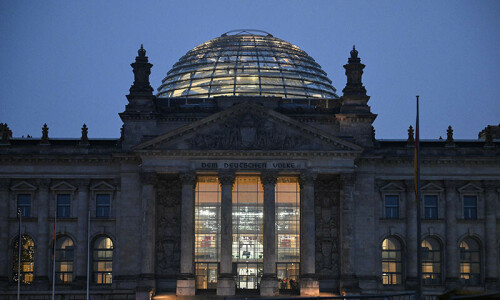FROM the bustling mills of Faisalabad to the humming ports of Karachi, clouds of uncertainty hover over Pakistan’s export industry as proposed tariff hikes under the new US administration threaten to disrupt global trade.
The stakes could not be higher for Pakistan, given that the US is not only its largest export destination but also one of the few countries with which it enjoys a significant trade surplus. In 2023, Pakistan’s exports to the US reached $5.01 billion, accounting for approximately 18 per cent of the country’s total exports. This advantageous trade relationship is now at risk, with potential implications that extend far beyond simple tariff calculations. The ultimate impact will depend on multiple interconnected factors: price elasticity of Pakistani goods in the US market, trade diversion effects from US tariffs on China, and global trade dynamics. These complexities mean the effects could range from temporary market adjustments to long-term structural changes.
If the upcoming US administration imposes a 10 to 20pc tariff, the sector that is going to be most affected would be textiles, which accounts for more than 70pc of Pakistan’s exports to the US. For Pakistani manufacturers already grappling with exorbitant energy costs and inflation, tariffs could be the breaking point. The math is simple but brutal: when profit margins are already thin, a tariff hike could make the difference between a thriving export business and one that struggles to survive.
Yet, like any story of economic change, this one has its twists and turns. The same policies that threaten Pakistan’s exports to the US could create unexpected opportunities. If the US imposes 60pc tariffs on Chinese goods, some doors might open for Pakistani producers. We have seen this before during the 2018-19 trade war when our exports to the US increased as buyers sought substitutes for Chinese products.
The same policies that threaten our exports to the US could create opportunities.
The legal landscape adds another layer of complexity. Before the WTO, Pakistan’s case against these tariffs would rest on well-established principles. Article II of the General Agreement on Tariffs and Trade prohibits countries from increasing tariffs unilaterally above their agreed commitments, while Article I of the GATT prohibits discrimination in international trade. However, in the world of realpolitik, legal arguments often take a back seat to political and economic realities. The dysfunction of the WTO’s Appellate Body further complicates the path for effective legal recourse.
The solution lies in a coordinated strategy encompassing diplomacy, industrial reform, and trade diversification. In the immediate term, Pakistan must walk a diplomatic tightrope, maintaining strong relations with the US while protecting its economic interests. This means not only engaging through formal channels but also strengthening direct connections between business communities.
The medium-term horizon calls for a more fundamental transformation. The goal is not merely to survive tariffs but to thrive in an era of heightened trade competition. For this, Pakistan’s industrial base, particularly its textile sector, needs to become more efficient and globally competitive. This entails modernising machinery and workforce, excelling in synthetic fabric manufacturing, and adopting energy-efficient processes.
Looking ahead, Pakistan must diversify its export portfolio. This means reducing its dependence on any single market, even one as important as the US. The EU, with its vast consumer market and GSP-Plus programme, provides an excellent alternative. Besides, emerging markets in Asia and Africa offer other opportunities for diversification. Building robust trade relationships with these markets would create a safety net, shiel-ding Pakistan from future trade shocks.
While adapting to new tariffs requires immediate action, Pak-istan stands on solid ground to embrace these changes and turn adversity into opportunity. The country’s young, tech-savvy workforce — with over 60pc of the population under 30 — represents a demographic dividend that is already driving innovation in sectors from textiles to technology. Pakistani startups raised significant capital even during global downturns, and the country’s IT exports have shown remarkable growth in recent years. The established textile infrastructure, combined with a growing digital economy and location along major trade routes, positions Pakistan uniquely for economic transformation.
The proposed tariffs not only present a significant challenge, they offer Pakistan an opportunity to rethink its economic strategy. The question is not just how to weather this storm, but how to emerge stronger from it and build a more resilient and dynamic economy that can thrive in an increasingly complex but interdependent world.
The writer is currently pursuing an LLM degree at Stanford Law School.
Published in Dawn, December 27th, 2024











































Dear visitor, the comments section is undergoing an overhaul and will return soon.